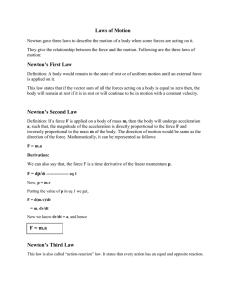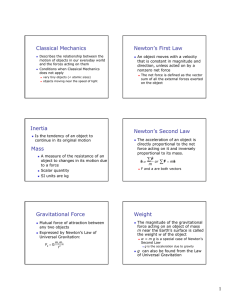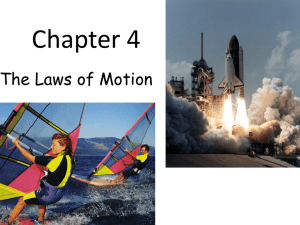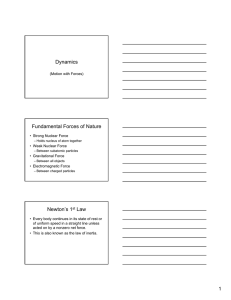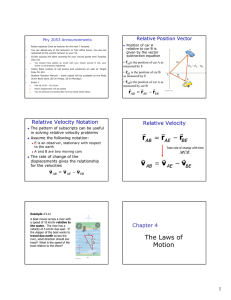r Relative Position Vector Relative Velocity
advertisement
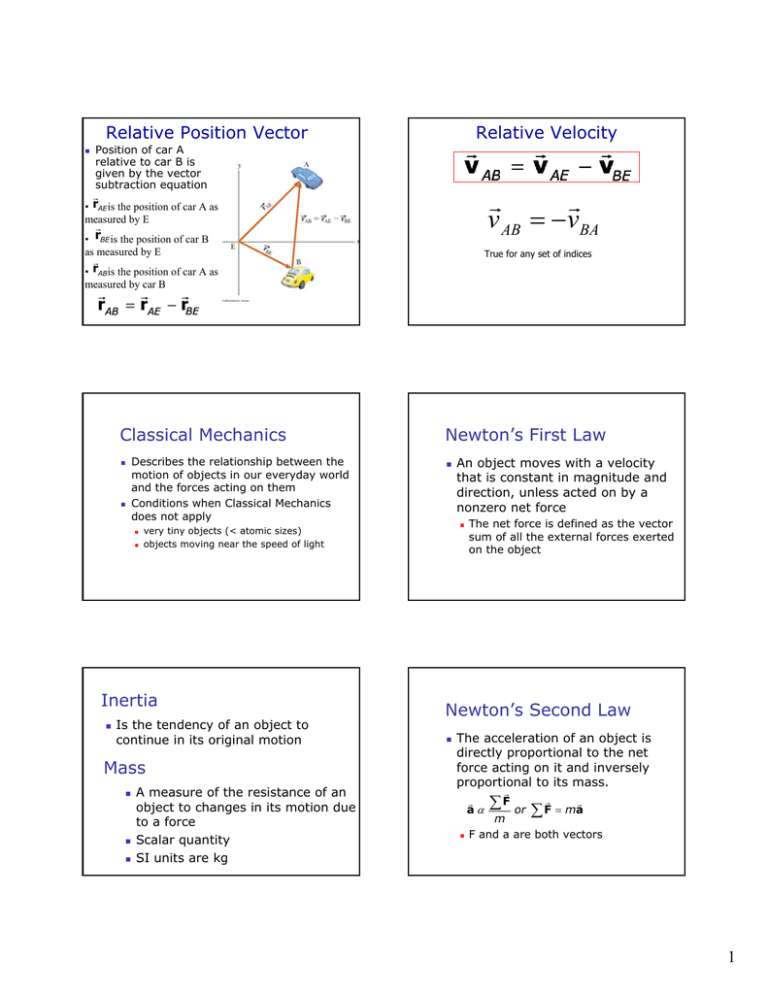
Relative Position Vector Relative Velocity Position of car A relative to car B is given by the vector subtraction equation r r v AB = −vBA r • rAE is the position of car A as measured by E r • rBE is the position of car B as measured by E True for any set of indices r • rAB is the position of car A as measured by car B Classical Mechanics Describes the relationship between the motion of objects in our everyday world and the forces acting on them Conditions when Classical Mechanics does not apply Is the tendency of an object to continue in its original motion Mass A measure of the resistance of an object to changes in its motion due to a force Scalar quantity SI units are kg An object moves with a velocity that is constant in magnitude and direction, unless acted on by a nonzero net force very tiny objects (< atomic sizes) objects moving near the speed of light Inertia Newton’s First Law The net force is defined as the vector sum of all the external forces exerted on the object Newton’s Second Law The acceleration of an object is directly proportional to the net force acting on it and inversely proportional to its mass. r aα r ∑ F or ∑ Fr = mar m F and a are both vectors 1 Units of Force SI unit of force is a Newton (N) kg m 1N ≡ 1 2 s US Customary unit of force is a pound (lb) 1 N = 0.225 lb Gravitational Force Mutual force of attraction between any two objects Expressed by Newton’s Law of Universal Gravitation: Fg = G m1 m2 r2 Weight The magnitude of the gravitational force acting on an object of mass m near the Earth’s surface is called the weight w of the object w = m g is a special case of Newton’s Second Law g is the acceleration due to gravity g can also be found from the Law of Universal Gravitation 2
